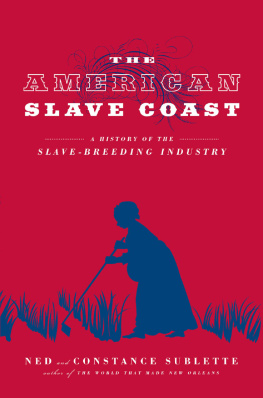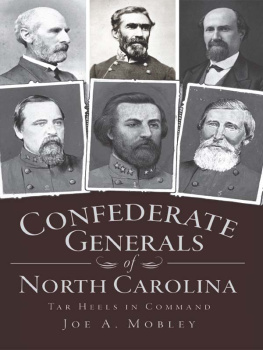Figures, Maps, and Tables
FIGURES
1.1. Slaves building fortifications, January 31, 1863,
2.1. Layout of ditch from Mahans Treatise on Field Fortification, 1846,
2.2. Slaves building fortifications, April 18, 1863,
2.3. Chaffins Bluff fortifications,
2.4. Slaves in Engineer Hospital, JuneDecember 1862,
3.1. Confederate fortifications at Drewrys Bluff, December 13, 1862,
3.2. Wilmington coastline and Fort Fisher, April 2, 1864,
4.1. Map of Richmond fortifications, 1863,
4.2. Albemarle County impressment quotas,
4.3. Map of Wilmington fortifications, including U.S. plan of attack, 1865,
5.1. Plan and sections of Fort Fisher, 1865,
5.2. Petersburg fortifications,
MAPS
1. Primary points of fortification,
2. Virginia counties, 1860,
3. North Carolina counties, 1860,
4. Responses to January 1864 call in Virginia,
TABLES
1.1. First Call for Slaves to Work on Fortifications in Virginia, October 1862,
1.2. Second Call for Slaves to Work on Fortifications in Virginia, November 1862,
1.3. Third Call for Slaves to Work on Fortifications in Virginia, January 1863,
1.4. Call for Slaves to Work on Fortifications in North Carolina, March 1863,
3.1. Fourth Call for Slaves to Work on Fortifications in Virginia, March 1863,
3.2. Frenchs Report of Virginia Slaves Impressed Prior to March 1863,
3.3. Calls for Slaves to Work on Fortifications in North Carolina (Estimated), MarchApril 1863,
4.1. Fifth Call for Slaves to Work on Fortifications in Virginia, August 1863,
4.2. Calls for Slaves to Work on Fortifications in North Carolina (Estimated), AugustOctober 1863,
4.3. Sixth Call for Slaves to Work on Fortifications in Virginia, January 1864,
5.1. Virginia Slaves Impressed by Enrolling Office, September 1864,
5.2. Slaves Impressed for Fortifications at Weldon, North Carolina, October and December 1864,
5.3. Seventh Call for Slaves to Work on Fortifications in Virginia, December 1864,
5.4. Eighth Call for Slaves to Work on Fortifications in Virginia, March 1865,
5.5. Auditors Statement of Black Men, 1845, Fit for Service in Virginia, March 1865,
Confederate Slave Impressment in the Upper South
INTRODUCTION
Cornerstones and Construction Workers
Slave Labor and the Confederate War Effort
We have nothing to fear from any action of our slaves in this crisis, intoned the editor of the Richmond Whig in February 1864. Instead, he proposed, Confederate fiscal and impressment policies had steadily undermined the institution of slavery, the Confederacys sheet anchor in its struggle for independence. While inflation had devalued slave property and government seizure of grains and livestock made it difficult to feed large slave populations, the paper focused much of its ire on government requisitions for slave labor. By impressing slaves, he suggested, the Confederate and state governments had forced each slaveholder to calculate the value of his slaves, and in some instances [he] is ready to discard them as burdensome to him. Slavery will nowhere exist where it proves unprofitable.
This bombast masked a well-known reality: slaves were running away from their owners, often in large numbers, especially in Virginia. Rather than slaveholders calculating the costs and benefits of slavery with an eye toward discarding the institution, slaves themselves were making daily decisions about how and under what circumstances to resist and perhaps even escape. The purpose of this particular editorial, however, was not to explore the process of wartime emancipation but rather to excoriate the practice of slave impressment by both state and national officials. From the perspective of at least some slaveholders, the government they had founded to protect their interests had become the primary threat.
Through impressment, white Virginians and North Carolinians temporarily surrendered control over portions of their slave populations to state authorities, military officials, and finally the national government in order to prosecute their war for Confederate independence. In one of the most ironic developments of the war, Confederate citizens who had emphatically rejected the United States governments attempts to interfere with the institution of slavery came, reluctantly, to accept that interference from their new government. In part, this acceptance reflected their confidence that no Confederate officials secretly harbored abolitionist tendencies, although, as the Richmond Whig noted, their actions did ultimately hasten emancipation. But the dire necessity of war encouraged voters, elected officials, and state governments to give the Confederate government more latitude to enact policies regarding slavery than the U.S. government had boasted. This latitude was not unlimited, however, and slaveholders would raise numerous objections to the practice of slave impressment.
Slaveholders, fearing that the governments seizure of slaves for military work would leave them without sufficient laborers, objected to slave impressment for both practical and ideological reasons. Many questioned the right of state and national officials to impress all forms of property, not just slaves. Yet despite any furor over slave impressment, winning the war was the primary aim of most white North Carolinians and Virginians, and thousands of slaveholders in both states quietlyno doubt begrudginglyacquiesced in recurring requisitions for slave labor, thus demonstrating their continuing support of the Confederate war. More important, the high level of cooperation between local, state, and national government officials that slave impressment required suggests that the existence of powerful governors, state legislatures, and county court officers strengthened, rather than undermined, the Confederate nation. By 1864, in fact, the governors of Virginia and North Carolina responded to complaints from their constituents not by obstructing Confederate requisitions for slave labor but instead by supporting a more intrusive national impressment plan. These observations fly in the face of much popular and historical orthodoxy about the nature and success of Confederate governance.





